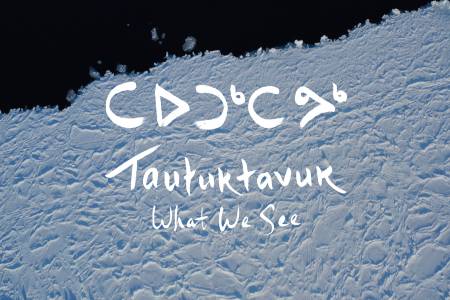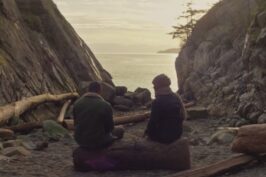In Tautuktavuk (What We See), the lines between narrative and non-fiction connect to bring us the story of Uyarak and her eldest sister Saqpinak. The sisters begin a difficult healing journey that reminds them of the importance of community, culture, and family.
Directors Lucy Tulugarjuk and Carol Kunnuk set Tautuktavuk during the lockdown periods of the COVID-19 pandemic. Feeling isolated in Montreal, Canada, the younger sister Uyarak (Tulugarjuk) uses Zoom to keep in touch with her closest friend and older sister Saqpinak (Kunnuk) in Igloolik.
Over the course of their chats, we come to understand Urayak experienced a traumatic event in childhood which has resurfaced. As she uses therapy to find support, she also shares with Saqpinak her memories and feelings in an attempt to make sense and heal from this event.
Meanwhile, Saqpinak is connected wtih family and hosts gatherings with her community but things are difficult at home as Saqpinak herself is experiencing domestic abuse at home. The elder sister makes the decision to talk about this with Uyarak when she can visit home.
Tautuktavuk is a combination of vignettes that combine fictional and non-fictional elements. The directors want this film to be a vehicle for discussion, empowerment and healing for children and adults alike.

Lucy Tulugarjuk further explains, “In our culture putting ‘me’ as a priority was not acceptable – because in our culture Inuit is ‘we’ not ‘I’. We were taught not to show or talk about feelings to others in the community. It takes a lot of courage to go against our culture by prioritizing oneself, but I know for me to get better, I must look after myself, too. That’s why it is so important to acknowledge it’s okay to ask for help; it’s good to look after myself and look after those I love.”
Carol Kunnuk is “excited about this new film and the opportunity to tell a story about our contemporary reality with strong female characters in the lead. This is what inspires me, bringing women’s perspectives to the forefront, including gender violence, and missing and murdered Indigenous women.”
Films like Tautuktavuk can certainly empower Inuit and Indigenous communities in telling their own stories. It is also my opinion, these films are required viewing to also get an understanding of the social challenges of living in these communities and what resources still need to be made available to them. Change is necessary but it will take time. In the least, the film can inform us and serve as a start of conversations with our friends and families.






